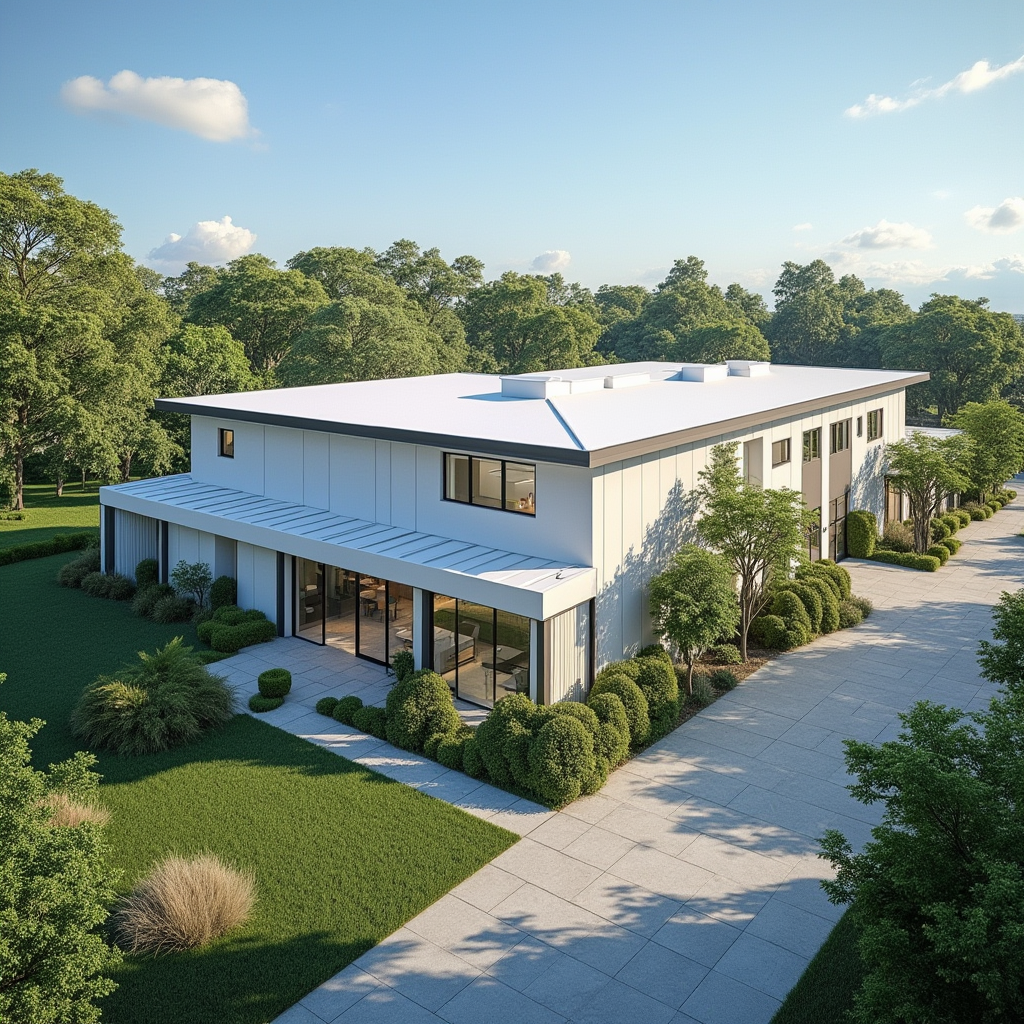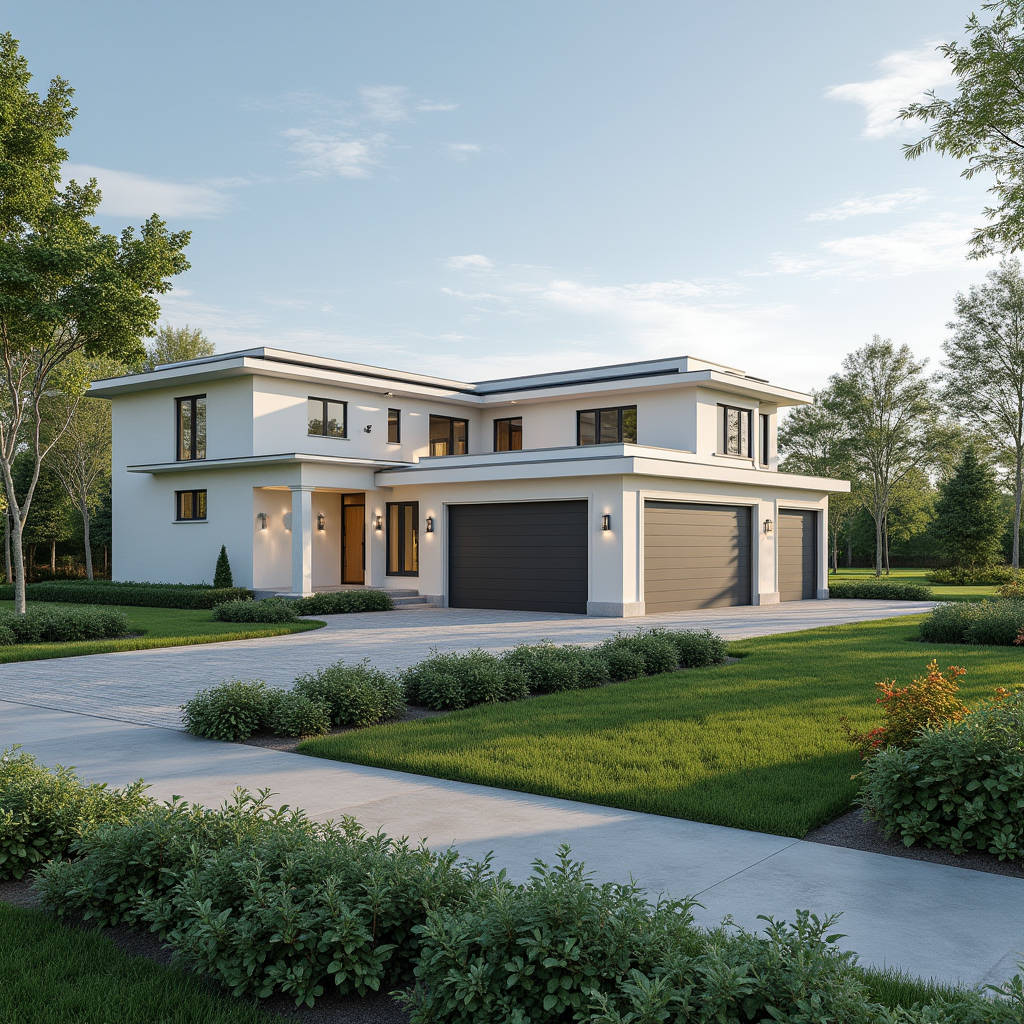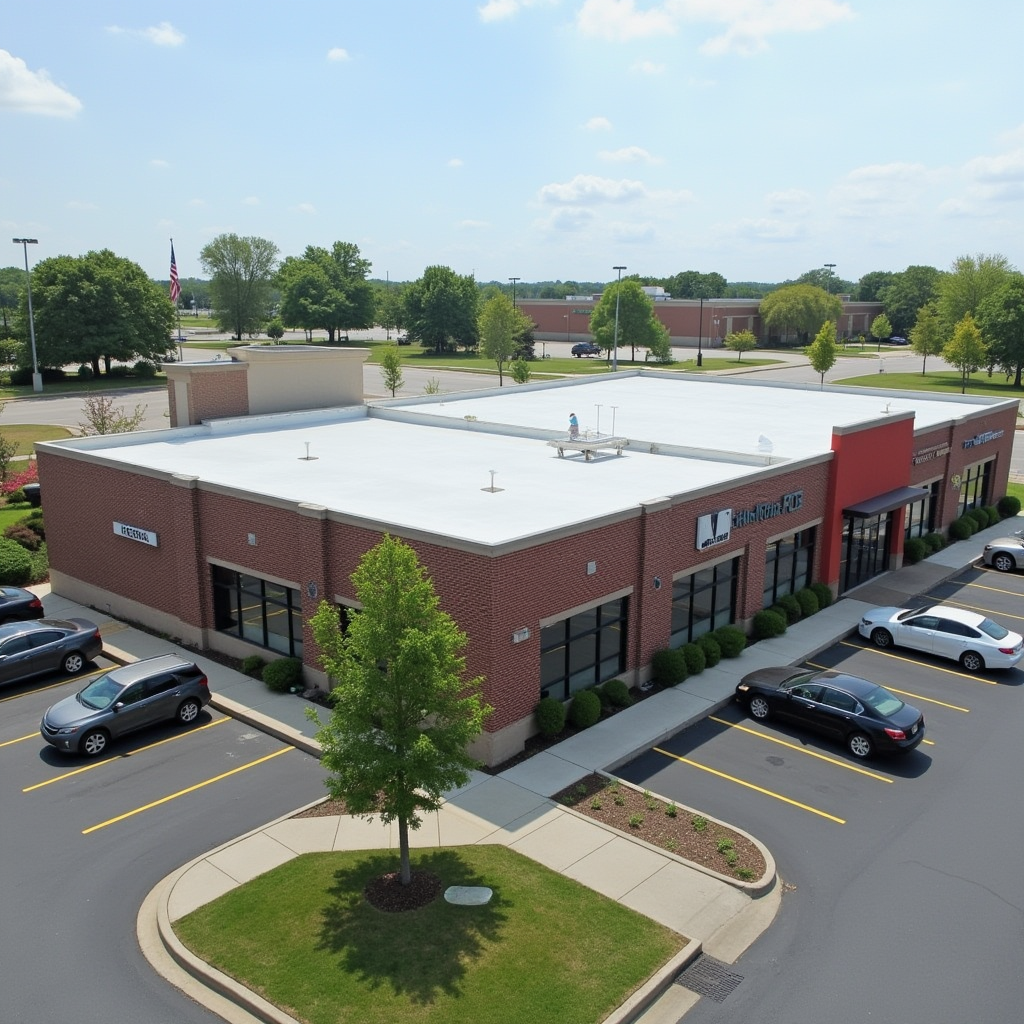Single-Ply Roofing for Your Building
TPO The Affordable Solution for Long-Lasting Protection
Reliable Flat/Low Slope Roofing Options for
Residence and Commercial Buildings
A Smart Choice for Flat or Low-Slope Roofs
The Benefits of Single-Ply Roofing for Your Home or Business:
A Smart Choice for Flat or Low-Slope Roofs
When it comes to roofing options for flat or low-slope roofs, single-ply roofing stands out as a popular and effective solution. Composed of flexible sheets of synthetic materials, single-ply roofing systems offer numerous advantages for both residential and commercial properties. Here’s why you should consider this roofing type for your home or business.
1. Durability and Longevity
Single-ply roofing systems are engineered to withstand the elements. Made from high-quality materials such as TPO (Thermoplastic Olefin), PVC (Polyvinyl Chloride), or EPDM (Ethylene Propylene Diene Monomer), these roofs are resistant to UV rays, weathering, and thermal shock. With proper installation and maintenance, a single-ply roof can last 20-30 years or more, making it a long-term investment.
2. Energy Efficiency
Single-ply roofing materials often come with reflective surfaces that help reduce heat absorption. This characteristic is particularly beneficial for flat and low-slope roofs, where heat can accumulate. By reflecting solar energy, single-ply roofing can help lower cooling costs during hot months, contributing to improved energy efficiency and lower utility bills.
3. Lightweight and Easy to Install
One of the significant advantages of single-ply roofing is its lightweight nature. Unlike traditional roofing materials, single-ply membranes are easy to handle and install, which can lead to faster project completion times. This efficiency minimizes labor costs and disruptions for businesses, allowing operations to continue with minimal interference.
4. Water Resistance
Single-ply roofs are designed with seamless membranes that minimize the risk of leaks. Properly installed, they provide excellent water resistance, making them an ideal choice for flat or low-slope roofs where water drainage can be a challenge. Moreover, many single-ply systems have built-in warranties that cover potential water-related issues.
5. Flexibility and Adaptability
Single-ply roofing is highly adaptable, allowing it to accommodate the unique contours and structures of various buildings. This flexibility enables it to expand and contract with temperature changes without compromising its integrity, reducing the risk of cracks or damage over time.
6. Environmental Considerations
Many single-ply roofing products are made from recyclable materials, making them an eco-friendly option. In addition, their reflective properties not only save energy but also contribute to reducing the urban heat island effect—a significant advantage in densely populated areas.
7. Low Maintenance Requirements
Single-ply roofs require minimal maintenance compared to other roofing types. Regular inspections and occasional cleaning can help prolong their lifespan while ensuring they continue to perform at their best.
8. Aesthetic Options
Single-ply roofing systems come in various colors and finishes, allowing homeowners and business owners to choose an appearance that complements their building’s design. This versatility means you don’t have to sacrifice aesthetics for functionality.
Conclusion
Choosing single-ply roofing for your flat or low-slope roof is a smart decision that offers numerous benefits for both residential homes and commercial buildings. With durability, energy efficiency, water resistance, and adaptability at its core, this modern roofing solution ensures that your property remains protected while enhancing its overall value. If you’re considering a new roof or an upgrade, explore the possibilities that single-ply roofing can offer—your home or business will thank you!
Single-Ply Roofing Systems
The Answer To Low Slope and Flat Roofs
Maximize Your Building’s Lifespan
Protect Your Property with Durable and Reliable Single-Ply Roofing
Affordability
Colors
Durability
Energy Efficiency
Improved Longevity
Resale Value
Single-Ply Roofing Colors
Your Choices Are Limited When It Comes To Single-Ply Roofing Material
The samples displayed below feature colors available when it comes to single-ply roofing.
White
Gray
What Is Under My Single-Ply Roof?
What Lies Beneath Your Single-Ply TPO Roof?
A single-ply TPO roof is more than just its visible surface; it comprises several essential layers that contribute to its performance and durability. At the base, you’ll find the roof deck, which can be made from concrete, wood, or metal. This foundational layer provides structural support and stability for the entire roofing system.
Above the deck, insulation is typically installed, with ISO board being a common choice. This insulation layer enhances energy efficiency by reducing heat transfer and promoting climate control within the building.
Next, a cover board may be added to provide additional protection and enhance the overall integrity of the roof. Finally, the TPO (Thermoplastic Olefin) membrane is installed, creating a seamless, durable barrier that resists UV rays and weathering. Together, these components form a robust system that protects your property while maximizing energy efficiency and longevity.

Do I Get New Trim Metals ?
Trim metals are vital elements of a single-ply roof system, offering both practical benefits and visual enhancement. These components, which include flashing, coping, and edge metal, serve essential roles in maintaining the integrity of your roofing structure. Flashing is strategically installed at critical points, such as seams and penetrations, to effectively redirect water away from vulnerable areas, preventing potential leaks that could compromise the roof’s performance. It acts as a barrier against moisture intrusion, helping to extend the lifespan of your roofing system. Coping provides a protective cap for parapet walls, shielding them from harsh weather conditions while adding an attractive finishing touch. It not only enhances the aesthetic appeal of the roof but also reinforces its durability by preventing water damage to the wall edges. Finally, edge metal is installed along the perimeter of the roof to ensure proper water drainage and provide a clean, finished look. Together, these trim metals significantly contribute to the functionality and longevity of a single-ply roof while enhancing its overall appearance.
The Role of Trim Metals in Your Single-Ply Roof System
Trim metals are essential components of a single-ply roof system, providing both functionality and aesthetic appeal. These metals, such as flashing, coping, and edge metal, play a crucial role in protecting your roof from water intrusion and ensuring long-lasting performance.
Flashing is used to redirect water away from critical areas, such as joints and penetrations, preventing leaks that can compromise the integrity of the roofing system. It is typically made from aluminum, copper, or galvanized steel for durability.
Coping serves as a protective cap for parapet walls, shielding the edges from weather damage and enhancing the roof’s overall appearance. Like flashing, coping is available in various materials to match your building’s style.
Edge metal, often installed at the perimeter of the roof, provides a clean finish while ensuring proper water drainage. Together, these trim metals reinforce the effectiveness of a single-ply roof while adding an attractive finishing touch.

A Look at Some Eye-Catching Single-Ply Roofs
Examining sample photos of single-ply TPO roofing is an excellent way for homeowners to envision how different colors and finishes will complement their home’s exterior. These visual references allow individuals to see the impact that specific TPO membrane hues can have on overall curb appeal and design aesthetics. By exploring a variety of images showcasing different architectural styles and color combinations, homeowners can better understand how various shades—ranging from classic whites and grays to vibrant greens and blues—interact with other elements such as siding, trim, and landscaping.
This exploration not only aids in making informed decisions but also inspires creativity when selecting a roofing option that aligns with personal style and the overall look of the home. Ultimately, viewing sample photos serves as a valuable tool in the roofing selection process, ensuring that the final choice enhances the property’s beauty while providing lasting quality and durability associated with single-ply TPO roofing systems.






Words From Our Customers
We pride ourselves on delivering exceptional service and high-quality results to our valued customers. One of the most rewarding aspects of our work is receiving heartfelt testimonials from our happy customers. These testimonials not only validate our efforts but also inspire us to continuously improve and serve our community better. We are incredibly grateful for the feedback we receive. Here are just a few excerpts from recent testimonials that highlight the satisfaction of our customers.

Great Experience!
Great experience! Our new tile roof is great. No problems with installation. Very professional. Would recommend without any reservations.. Mary Beth R.

Thank You For The Beautiful Work
Mr Johns and Co. Thank you so much for the beautiful work on repairing the leak in the roof. Be proud of your young men who came to the job. So polite so careful and very considerate. We sure need more like them. I'd recommend your company any day. Thanks for your trust in me to pay you.

A Really Great Job
They did everything they said they were going to do, at the exact price that they quoted us. The job was also completed on time and they cleaned up after themselves. Absolutely perfect and would certainly recommend them to others.

Thank you for a beautiful roof
My mom's house looks Great!! This is to let you know that I have let my friends know to go see the house because we are so pleased. My neighbor was hired to watch the proceedings for me and he commented that you used an upgraded lining product under the shingles. Thanks for a great job at a reasonable price.

Superb Service
They are always prompt, courteous, and have fair pricing. I would recommend these guys to anyone who is looking for a really good, honest roofing company.

Thank You So Much
Thank You so much for fixing my roof. I am in Illinois. I did get here 3 days before my dad passed. You saved me a lot of worry about my roof. I will always recommend you. Sincerely Sharon L.

Thanks for doing a wonderful job
Thanks for doing such a wonderful job, not only on the roof but working with the other installers. I hope that the multiple favorable comments we have gotten from folks in our neighborhood will translate into more work for you! Do not hesitate to use us as a reference for anyone who asks.

Words cannot express our gratitude
Words cannot express our gratitude to you. From the beginning of our re-roof contract to the end result, we could not have imagined the high quality and professionalism of all those involved. W would gladly recommend you to anyone. Thank You Lynn & Jackie
Are You Ready For Our Roofing Services
Below Are A Few Frequently Asked Questions.
Unless you’re a trained professional, avoid DIY roofing repairs. Many manufacturers won’t honor warranties without licensed work. Plus, roof work can be dangerous—consider if saving money is worth the risk.
There’s no one-size-fits-all answer to roofing questions. With various products available, it’s best to consult an expert who can evaluate your roof, design, climate, and budget for tailored recommendations.
The timeline for roofing projects varies by roof type and required inspections. Weather can cause delays, with small homes taking about a week and larger commercial jobs ranging from weeks to months.
Single-Ply TPO (Thermoplastic Olefin) roofing is a popular flat roofing system made from a single layer of thermoplastic material, known for its durability, energy efficiency, and ease of installation.
Yes, TPO roofing can often be installed over an existing roof, provided that the underlying structure is sound and meets the manufacturer’s requirements. This can save on labor costs and time.
Compared to traditional materials like EPDM and PVC, TPO is generally more affordable and environmentally friendly. It also boasts better energy efficiency due to its reflective properties, which can reduce cooling costs.
TPO roofing can be installed using several methods, including mechanically attached, fully adhered, or ballasted systems. The choice depends on the specific building structure and local climate conditions.
Maintaining a TPO roof involves regular inspections to check for damage or wear, cleaning debris off the surface, and ensuring that drains and gutters are clear to prevent water buildup.
